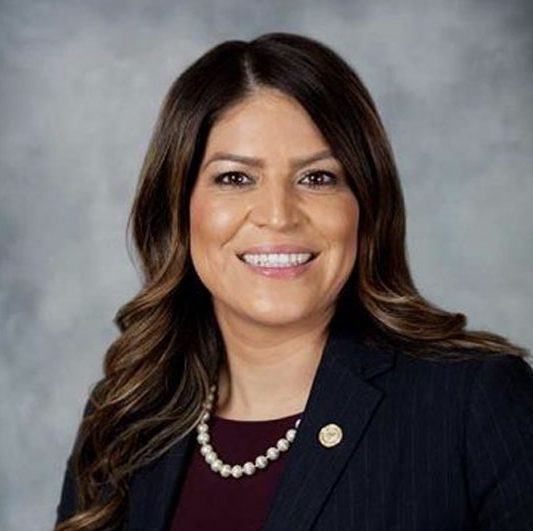Share
The Fresno City Council adopted a budget on Tuesday, continuing last year’s $1.3 billion spending plan for another three months.
“For an elected official, this is the year from hell, but we’ve all done a remarkable job and all the pressure of working together,” Fresno Mayor Lee Brand said.
The most interest from the public revolved around how to fund police. Several called for changes, with some going as far as to call for defunding police.
The plan essentially keeps last year’s spending in place, including $184 million for police from the general fund.
Brand’s Continuing Resolution Approved
After expressing reluctance to “rubber stamp” Brand’s plan, as council president Miguel Arias put it, the council unanimously approved the continuing resolution.
“We’re looking at is a proposal that doesn’t include layoffs. A proposal that doesn’t include cuts to service yet,” Arias said. “The most difficult part isn’t over yet.”
While the budget will remain status quo, things may get worse come September. Arias said it depends on how the $92 million in federal stimulus funds from the CARES Act can be utilized.
Status Quo Budget
“(This is) probably the most difficult budget I’ve ever done. It’s totally unprecedented.” — Fresno Mayor Lee Brand
Brand pushed for the resolution because the city’s finances are in flux because of COVID-19. While the city is unsure how much tax revenues will be down, estimates range from $35 million to $40 million.
“I think it gives us the opportunity as we emerge in probably September, having knowledge of the data from the sales tax,” Brand said, “and also knowing whether or not we get money from additional CARES will be more expanded or additional money will become available.”
During the month-long budget process, the council passed more than 50 budget motions directing how to spend money. Brand’s staff will have to reconcile those motions into the budget now that it is passed.
“(This is) probably the most difficult budget I’ve ever done. It’s totally unprecedented,” Brand said. “We started the year with difficult times, the normal stuff. We’ve had a once in a century pandemic, that has totally turned this nation and us upside down. We’ve had the result of an economics tsunami, that’s crushing business across the country.”
Brand said the budget maintains core services, maintains the city’s reserve fund, and continue to support a fully funded pension system.
The budget, broken down by department, can be found here.
Reform Commission Could Reshape Police Budget
Several budget motions dealt with removing police from certain duties, such as the Homeless Task Force and mental health calls. The council will await recommendations from the Commission on Police Reform before making a final decision.
The council also voted to spend up to $300,000 on the Advance Peace initiative — designed to lessen gang violence. It is still not clear where those funds will come from.
$92 Million in Federal Funds Outlined
The council also approved, 7-0, Brand’s revised plan to spend $92 million from federal stimulus dollars from the CARES Act. The revisions weren’t publicly released until an hour before the 9 a.m. meeting, which irked several council members.
“I need more time then 20 minutes before a meeting to figure out what is being done, what changes are being made. This has got to stop. You need to give us more information,” councilman Garry Bredefeld said. “I can’t make these decisions on the fly.”
Brand and his chief of staff Tim Orman apologized for its lateness, saying they didn’t meet with the council’s budget subcommittee until late Monday afternoon.
Bredefeld pointed to the changes from Brand’s earlier plan that spent more for small business grants (it was reduced to $4 million) while increasing other programs.
While the plan will spend money in southwest and southeast Fresno, it is not the $30 million hoped for by Bredefeld and councilman Mike Karbassi.
Councilman Luis Chavez said the city needed to make sure that its investment in the southwest and southeast would be eligible under stringent federal guidelines. One factor is the money must be spent by Dec. 31.
“This was the best and easiest and more strategic way of mitigating a lot of the COVID impact that we’ve had,” Chavez said.
Spending CARES Act Money
The money will be spent in three categories — community investment ($45 million), city COVID-19 costs ($9.2 million), and preserving essential services ($38 million).
The city will spend $20 million on testing and clinics, more than $20 million on various grant programs including the Save Our Small Business Act and residential housing retention, and $4 million to rehabilitate parks and community centers.
“I want to make sure that the reserves are on the table because this community has built a reserve over the last six years for these exact times, for these difficult moments.” — Councilwoman Esmeralda Soria
At City Hall, $4.25 million will be used to retrofit facilities, $2 million to expand teleworking options and another $1 million for personal protective equipment. The city council chambers was open to the public for one day, featuring clear plastic dividers on the dais.
The chambers closed again after Arias’ son contracted COVID-19.
The city will also use federal funds to pay for $25 million in eligible salaries, saving the remaining $13 million for contingencies.
What’s Next?
Brand’s administration expects to present a full budget to the council by September when a more accurate picture of tax revenue is available.
Councilwoman Esmeralda Soria said nothing is off the table, including dipping into the city’s $35 million reserve fund.
“I want to make sure that the reserves are on the table because this community has built a reserve over the last six years for these exact times, for these difficult moments,” Soria said.





















